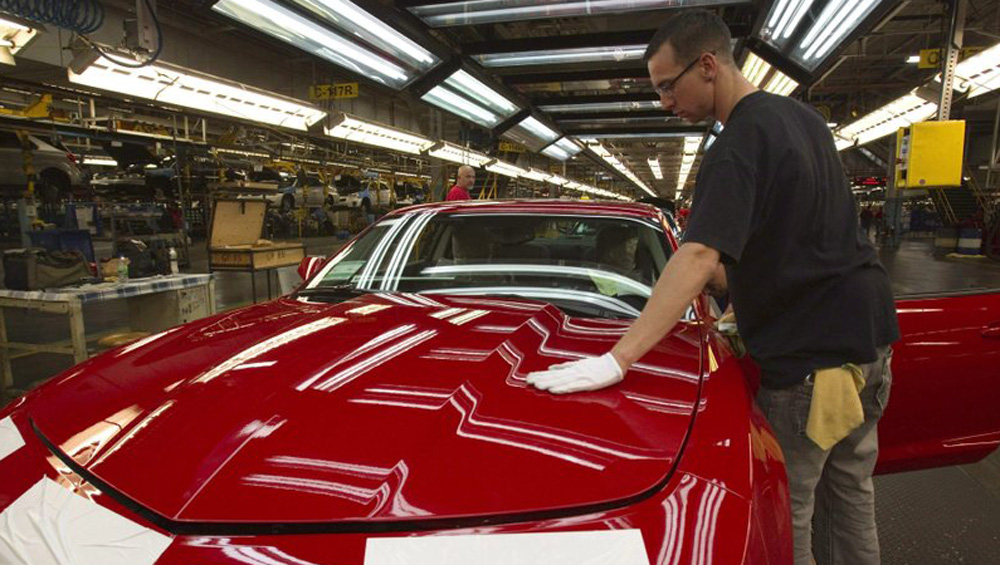
Lower Auto Sales Slows Spot Market

Don’t look for auto advertisers to drive the spot business this year.
According to broadcasters and other spot watchers, the stations’ biggest ad category — it typically accounts for around a quarter of total billings — was flat to slightly down in the second quarter compared to the same quarter last year, and the outlook for the rest of the year is for more of the same, although some optimists believe the category could squeeze out a percentage point of growth.
The lackluster prospects come atop a dismal first quarter, in which auto spending in spot dropped nearly 10% compared to the prior year, according to Kantar Media, which closely tracks the spending. Kantar’s second quarter figures will not be available until around Labor Day.
The problem is that auto ad spending moves in lockstep with actual sales of cars and light trucks and those sales have been trending down, despite the fairly strong economy.
The research firm LMC Automotive is forecasting that about 16.9 million light vehicles will be sold this year, down from about 17.3 million in 2018 and a high of 17.5 million back in 2016.
Bill Rinna, director of Americas vehicle forecasts at LMC, said that while the economy is strong, sales have been affected by higher interest rates, pricing and a disciplined approach to incentives.
“As new vehicles have become more expensive, nearly new and less-expensive off-lease used vehicles are becoming an increasingly more popular option for buyers, which is also putting pressure on new vehicle sales,” Rinna said.
The big factor in the first quarter decline was the tough comps produced by Olympic broadcasts in the first quarter of 2018.
The government shutdown and bad weather in early 2019 were other reasons why auto unit sales got off to a slow start, according to Steven Sturm, the TVB’s executive adviser for automotive.
Workers affected by the shutdown were hesitant to rack up big-ticket expenses like new cars, he believes. Then there’s the fairly high interest rates for car loans in general, no matter the fiscal quarter. It’s now at a pretty hefty average of 6.1%, Sturm said.
In the first quarter, spot TV garnered $328.6 million in Tier 1 (manufacturers) spending, down 5.8% over the same quarter last year. Tier 2 (dealer groups) brought in $253,188,000, down 11.2%. And Tier 3 (local dealers) results were $186,799,000, down 14.7%.
Combined, the three tiers washed up $768,633,000 against the shores of spot TV. That marked a decline of 9.9% over 1Q 2018.
But the situation could definitely have been worse for spot. Sturm’s analysis of Kantar figure shows that on average, media suffered a 19.5% decline, to $2.22 billion, in the auto category. (The figure excludes online video, mobile and internet search.)
Consequently, spot’s share of the auto spending was an unusually high 34.6%, Sturm said. Since he joined TVB about four years ago, he said, the share has been in the 30%-33% range.
There are reasons other than declining auto sales behind the soft outlook for spot in the months ahead.
“TV ratings have seen declines due in part to the declining multichannel universe, cord cutters and lack of major sporting events such as the Olympics,” said Peter Leitzinger, research analyst at S&P Global Market Intelligence’s Kagan unit.
“In regard to Tier 3, some of the auto spend has shifted to the digital side in hopes of targeting those millennial/cord cutter groups — and the added value in using digital data to target potential customers is heightened in times of slowing sales growth,” he added.
There is also the Trump factor. “There’s an ongoing dispute about importing vehicles from Japan and Europe. There’s the potential that Trump could add a 25% duty to those vehicles,” Sturm said. If that were to happen, it could cost the industry about two to three million units in potential auto sales, he said.
“Right now, there’s optimism that there’s a China deal in the making, but who can predict,” he said.
It’s in Tier 3 that Sturm sees the most room for improvement. “The retail side of the business is still very aggressive. When the retail market goes down, it’s a market-share battle between car companies and dealers,” he said. “The local side stays relatively strong, versus the national side.”
Mark Fratrik, SVP and chief economist at BIA Advisory Services, suggests that broadcasters stay positive. Even though auto sales are down, they are “still at a pretty high level.”
Consider, for example, that in 2009 auto sales totaled 10.41 million, according to LMC. So, if 2019 results actually come in at 16.9 million, it would be up over 60% in 10 years.
“With unemployment at 3.6%, you know people are confident about their jobs. There isn’t that much consumer concern about ‘Oh, am I going to make this car payment or not?’ ”
That’s certainly a focus for Nexstar Media Group. During the company’s first quarter earnings call in May, Chairman, President and CEO Perry Sook said that Tier 3 was pacing positively in the second quarter, with a mid-single-digit percentage improvement over same time last year.
Sook allowed that dealers are spending less on advertising than they once did. But, he added: “Our pitch to local dealers is: ‘You don’t need to buy five auto intenders sites because of duplication. Buy one and put the rest of the money into local TV, not only to build your brand, but create awareness for the auto intenders site that you are on.’ ”
































Comments (0)